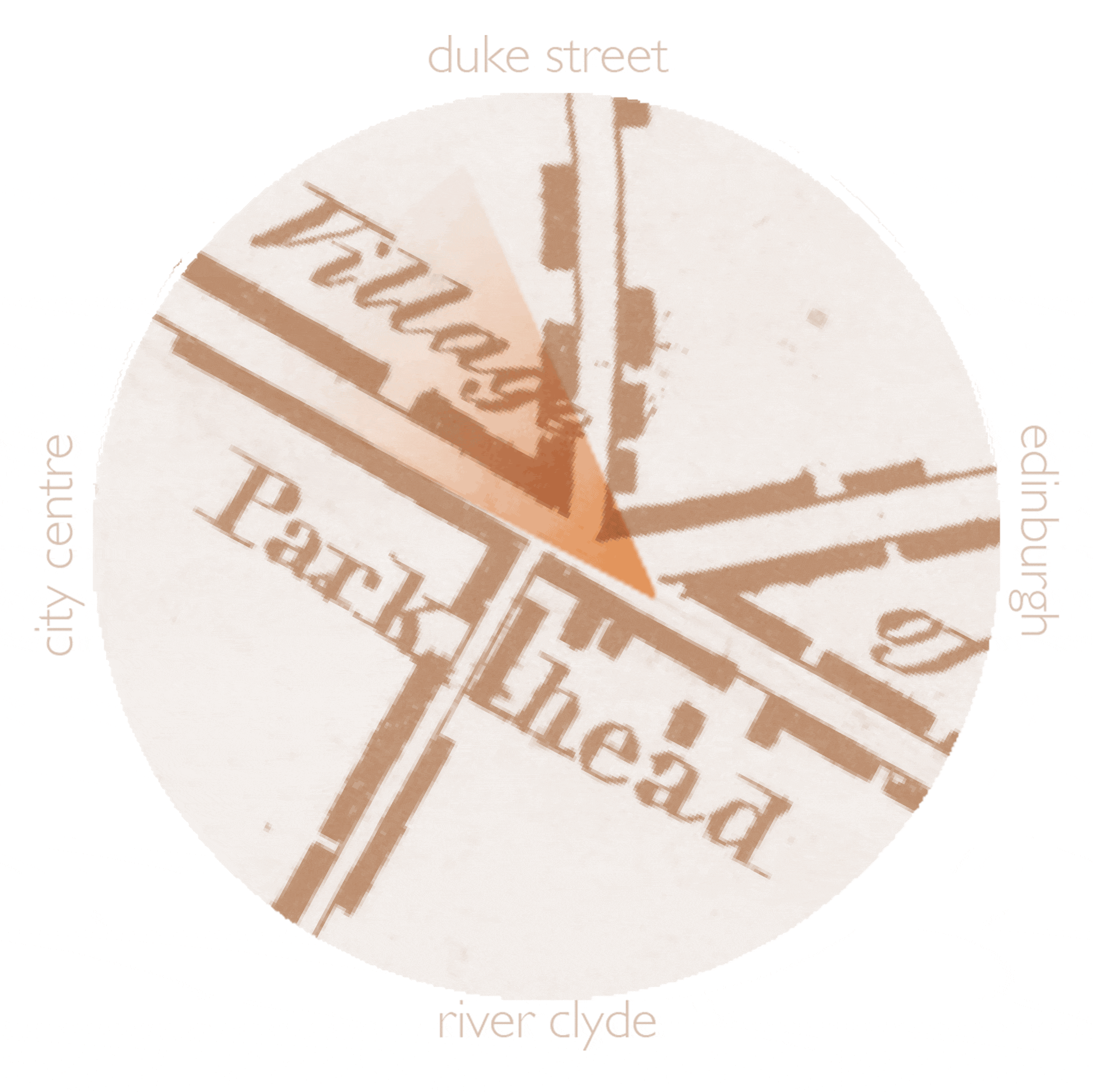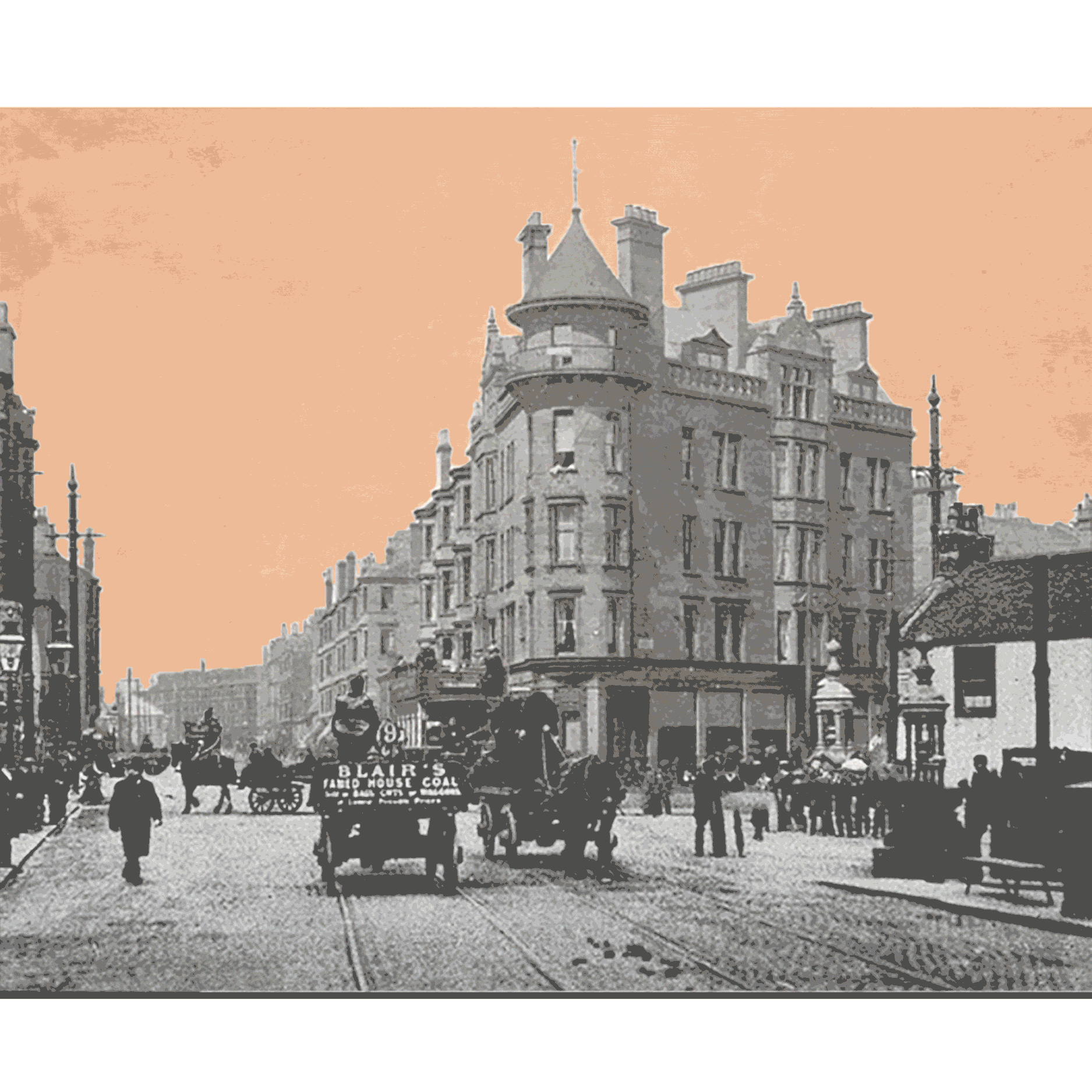Glasgow is a city that has developed around its crosses, both cartographically and socially. Key junctions were given the title of cross; these crosses formed meeting places, nodes of social activity and enterprise at the intersection of key routes.
Parkhead, in the east-end of the city, began as a weaving village on the periphery of Glasgow, before the discovery of coal in the area began its transformation into an industrial powerhouse. Parkhead became an area of heavy industry, with huge forges and factories appearing and then disappearing again over the course of the 19th and 20th centuries. The cross has changed with the area: initially a hub of activity and a lively meeting place, as the heavy industry expanded so did the traffic. Once trams dominated its roads, but with the rise of the personal motorcar they were displaced. Now the cross is a shadow of its former glory: impressive baroque sandstone buildings stand above empty shopfronts that overlook a busy junction, where narrow pavements are hemmed in by protective barriers to safeguard pedestrians from the constant flow of traffic. Might the cross regain its status as an important piece of the social fabric in the future?
Key Themes: Industry, Road Infrastructure, Commute, Social Spaces



